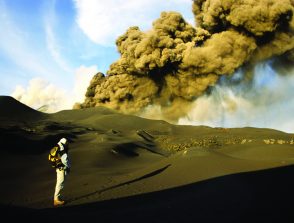Combining hydro-acoustic sources and bathymetric differences to track the vent evolution of the Mayotte eruption, Mozambique Channel : toward real-time eruptions monitoring
08/12/2023
IPGP - Îlot Cuvier
14:00
Séminaires thème Risques naturels
Salle 310
Jean-Marie Saurel, Lise Retailleau, Christine Deplus
IPGP
Deep-sea volcanoes, while forming the majority of Earth volcanism, are particularly complicated to study due to their remoteness. Very different methods can be used and combined to study submarine volcanoes behavior. In the Comoros archipelago, efforts have been made to study and monitor the deep volcanic activity (~3000 m) occurring east of Mayotte. In October 2020, a line of 10 Ocean Bottom Seismometers was deployed during 10 days, resulting in a hand-picked catalog of more than a thousand of hydro-acoustic signals that have been associated with reactions between hot lava and deep cold ocean waters. During the same period, repeated swath bathymetry surveys were performed over an active lava flow field. We compare the time evolution of the hydro-acoustic events locations and bathymetry differences observed between each survey. Bathymetric information gives absolute location of new lava flows and hydro-acoustic events give detailed relative time variations and short-term spatial evolution. By combining both complementary analyses we are able to clearly define the detailed evolution of the lava flows pattern in the short time period of 10 days. We are currently developping automated hydro-acousting events detection and processing codes. This will able us to reprocess data acquired in Mayotte since March 2019 and have a more precise estimation of volcano effusion rate. It will also make possible real-time sea-bottom eruption monitoring once applied to the future Marmor cabled instruments.




